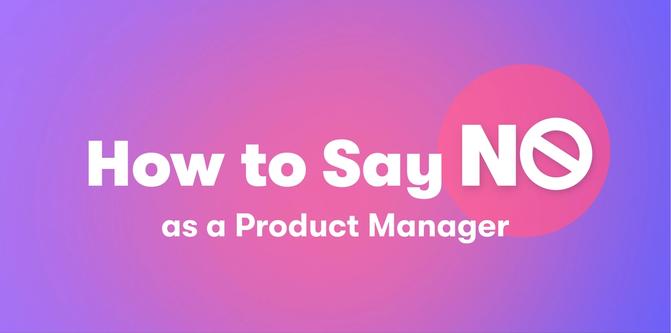The Guide to Inclusive Decision-Making

Inclusive decision-making starts with good product management.
Product Managers occupy the intersection of several job roles. In an increasingly global world where team members with different skills also belong to different cultures and parts of the world, good product managers must ensure that all voices on a team are heard to effectively leverage the strength of the collective group – to ensure that in the pursuit of excellence, the whole is greater than the sum of its parts.
A product manager's bane in handling teams effectively is often miscommunication or lack of communication with the team. Frequently, the root of such communication issues can be traced to teams that work in information silos.
Understanding Information Silos
According to the Cambridge dictionary, the word silo means “a large physical space for storing grain.”
So how does it translate to working in teams in the corporate world? Well, it turns out that the answer lies in the very definition of the word.
Information silos can be defined as situations where information, data, or knowledge crucial to the functioning and success of the project are not communicated or shared among team members, across different departments. These are phenomena where teams become isolated and begin to operate independently with reduced contact with each other. Only members with loud or powerful voices, either due to personality or cultural biases, end up being heard in such settings, with the overall team suffering from not benefiting from its equally important less loud voices.
Causes of information silos
One of the common causes of information silos is organizational structures and hierarchies. An organization that prioritizes rigid hierarchy creates an uneven playing field, where decision-making power lies with a few members. Prioritizing hierarchy over collaboration can also isolate valuable insights, preventing inclusive decision-making processes. Cultural or regional differences introduce additional challenges, impacting the exchange of ideas and perspectives. A lack of common objectives, resource constraints, and the absence of a robust and transparent feedback system contribute to silos.
Impact of Information silos on the product development process
- Decreased employee morale and lack of trust: A siloed environment leads to an “Us vs Them” mentality thereby destroying trust among the team members as well as leadership. This leads to reduced communication and collaboration. They do not foster an amicable environment.
- Duplication of efforts and resources: Teams may work on similar tasks or projects in isolation thus wasting resources. Thanks to a lack of collaboration and trust, teams do not receive regular updates. Thus team members could all be repeating tasks leading to inefficiencies.
- Delayed decision-making and missed opportunities: The fundamental requirement for effective decision-making is access to reliable and comprehensive data. Information silos that emerge due to a lack of cross-functional collaboration often hinder access to data for making effective decisions. As a result, decision-makers are often left in limbo as they wait for data to be gathered and consolidated, bringing about delays in crucial strategic moves. This often results in missed opportunities that prove expensive to businesses. The inability to share resource information across departments can lead to the inefficient allocation of resources exacerbating budgetary constraints.
- A barrier to innovation: Innovation relies on collaboration and a healthy exchange of ideas. For innovation to happen diverse voices and a healthy amount of discord are needed. The structure of a silo is the opposite of this. Silos discourage the exchange of information and knowledge. This results in the death of innovation. Finally, teams and organizations that need to realize this stop innovating and lose out to competitors.
- Impact on KPIs and overall business: All the above reasons can severely impact important metrics such as NPS (Net Promoter Score) and MAU (Monthly Active Users). In the dynamic world of Product Management where competitors launch new features and robust products on an almost daily basis, information silos eliminate innovation thereby resulting in user dissatisfaction. When users are dissatisfied they switch to others in the market.
- Culture: Finally, information silos affect one of the most important aspects of a team - its overall culture. By creating unequal access to data and relevant information, silos result in disparity, hindering the overall inclusivity of the development process, and affecting the team morale and culture.
Role of Product Managers in Tailoring Decision-Making Forums for Inclusivity
Digital products today serve users spanning various backgrounds and age groups. This makes inclusivity imperative for organizations. As a Product Manager navigating this dynamic landscape, tailoring approaches for inclusivity is a strategic necessity.
A diverse and inclusive product team is needed to create products that appeal to and cater to the needs of a wide range of users. To build such products, a variety of voices must be heard during the product development phase.
Importance of inclusive decision-making in Product Management
Diversity and inclusivity play important roles in a company’s healthy exchange of ideas and knowledge. They help in establishing trust among the users. Trust helps in having a loyal user base thereby resulting in better profits. There is no doubt today that diverse teams perform better and have better results.
The pandemic has taught us that we can longer continue to function in silos and that there are ripple effects to everything. A study by McKinsey shows that a diverse workforce is more likely than ever to outperform peers on profitability. Products developed by teams that function in silos face the threat of not hearing diverse opinions and hence the results will not be favorable to the reality of the external world. Furthermore, these kinds of products might provoke outrage from sections of society that rightfully feel underrepresented or worse misrepresented.
The ramifications of a siloed non-inclusive product development environment are quite disastrous. For starters, as human beings, we are all prone to biases. Frequently, these biases arise unconsciously, making it difficult to prevent them from manifesting in the product development process and impacting user experience.
Product Managers should be alert to biases and take proactive steps to objectively assess and recognize them within themselves and their teams. Recognizing and accepting the existence of biases are important steps in developing and implementing measures to combat them.
How can Product managers create inclusive and accessible decision-making forums for cross-functional teams?
Creating such spaces requires the attitude of leading with empathy. It requires product managers to adopt a thoughtful approach without being forceful. Below are a few strategies that Product Managers can implement to ensure inclusive decision-making becomes the norm.
- Diverse Representation: Product Managers can ensure they build diverse teams right from the hiring phase by collaborating with Human Resources and expressing interest in building diverse teams. By expanding recruitment efforts globally and considering candidates in career transitions or seeking career pivots, product managers can ensure diverse representation. Ensuring this at a team-building phase automatically creates inclusive decision-making forums. Such efforts might be complicated and risky but forming cross-functional and cross-cultural teams composed of individuals from different departments helps promote understanding, collaboration, and the exchange of varied perspectives.
- Encourage a culture of collaboration: Product managers should consistently encourage open communication, and teamwork, and emphasize knowledge sharing. They should also recognize and praise collaborative efforts to reinforce the desired behavior. This is where AI-powered collaborative tools such as Collato can help product managers and their teams to collaborate effectively. Their innovative features allow for seamless and real-time communication with external as well as internal team members with varying levels of permissions.
- Language Considerations: Product managers should be mindful of language differences and potential language barriers by encouraging team members to use plain language and avoid jargon. This can be done by using collaborative tools to share meeting materials well in advance, allowing non-native speakers the opportunity to familiarize themselves with the content.
- Cultural Sensitivity Training: In collaboration with Human Resources, Product managers and their teams can be a part of cultural sensitivity training to increase awareness of different working styles, communication norms, and decision-making approaches. This will help build a culture where individuals feel comfortable discussing cultural differences and asking questions to enhance understanding.
- Continuous Feedback Loop: Establish a continuous feedback loop to gather insights on how the decision-making forums can be more inclusive. Feedback should be sought regularly and processes updated as and when required.
How can Product Managers Leverage Technology for Inclusive Decision-Making?
Product Managers can leverage technology tools for breaking down communication barriers that arise as a result of silos. These platforms can democratize information sharing by ensuring that everyone gets access to all the documentation available.
- Real-time communication tools: Real-time collaboration tools such as Slack enable instant communication without any delays and this can help everyone feel involved. Thanks to Collato’s integration with Slack, communication delays can be avoided.
- Written Communication Platforms: Collaboration tools like Collato can ensure that project documents, specifications, and meeting notes are easily accessible and editable by team members in real time. This ensures that every team member feels empowered.
- Task Management Tools: Implementing Trello boards or Asana projects to outline tasks, deadlines, and responsibilities makes communication transparent and effective.
- The Product Manager as a Bridge Between Teams: If there is one word that describes a Product Manager - it is ‘bridge’. Owing to the nature of their role that often bridges across several teams, they become facilitators, responsible for breaking down silos and bridging gaps in the collective understanding of the cross-functional teams.
What is the difference between a good Product Manager and a great Product Manager?
Most experienced Product Managers are good at recognizing the inherent challenges in information sharing and communication but a great Product Manager proactively puts in place systems conducive to inclusive decision-making right from the start of the product development process and ensures that all voices are heard consistently. This action ensures that trust is being built from day zero. When there is trust among team members, most issues can be resolved before they become conflicts.
Recognizing and Addressing Communication Styles
The intricacies of diverse communication styles cannot be neglected and these can pose hurdles. Product Managers who lead with empathy as one of their values have a radical acceptance that communication styles vary greatly due to several macro factors.
While there are several communication styles and personalities, for the sake of simplicity and scope of this article, we will focus on ‘introverts and extroverts’, the two general styles across the world.
How can Product Managers navigate introvert-extrovert dynamics in teams?
While research has shown that communication styles can be changed, effective product managers understand that this change is incremental. Hence they craft impactful strategies by leveraging collaborative tools, establishing transparent communication channels, and encouraging a culture of openness.
- Introverts vs. Extroverts: The first step for a Product Manager is to acknowledge and appreciate the diverse communication styles within the team. Based on years of research and experiments conducted by social scientists the world over, the common consensus as of today is that introverts may prefer written communication, email, or one-on-one discussions, while extroverts might thrive in group settings, brainstorming sessions, and open forums.
- Individual Preferences: Product Managers should recognize that preferences vary among team members, irrespective of their introverted or extroverted tendencies. Some introverts excel in small group discussions, while extroverts may appreciate periodic moments for focused individual work.
Setting Expectations
Open and Flexible Communication Channels: Product Managers need to spend time understanding their teams and follow it up by establishing a variety of communication channels for team members to communicate their preferences. This can be done by encouraging introverts to voice their ideas through written mediums or one-on-one discussions, and extroverts to contribute in group meetings.
Collaboration Tools
- Written Communication Platforms: Utilising platforms like Collato for asynchronous communication, allows introverts to articulate their thoughts. The benefit of these tools is they enable privacy as well as the ability to share as and when needed. Tools like Collato with their innovative approaches help in breaking down silos among cross-functional teams.
- Task Management Tools: Before assigning tasks, product managers should consult with team members to get a full grip on their preferences. Based on feedback as well as project requirements, product managers can potentially try to assign tasks based on individual preferences, allowing introverts to take on detailed, focused work, and extroverts to handle collaborative, interactive tasks.
- Celebrate Diversity and Reward consistently in public: Effective product managers use every opportunity to emphasize the value of diversity. They highlight how each team member's unique approach contributes to the overall success of the project. They spend time truly understanding every member's contributions and reward for specific contributions rather than overall general praise. Being specific in praise develops ownership and encourages people to perform better.
Conclusion
Product Managers are the captains of the ships and hold great power to create inclusive teams. However, it is important to understand that building inclusive spaces takes time and effort. It is a voyage that requires continuous improvement and iterative development.
By understanding and embracing the differences in communication styles and leveraging collaborative tools strategically, Product Managers can create a balance in the development process, preventing information silos and eventually enhancing the efficiency and success of their product development efforts.
By fully embracing their role as bridges, product managers can collate cross-functional efforts, ensuring that every team's and every member’s unique voice is heard and that their contributions align seamlessly with the common goal of delivering successful and innovative products.




